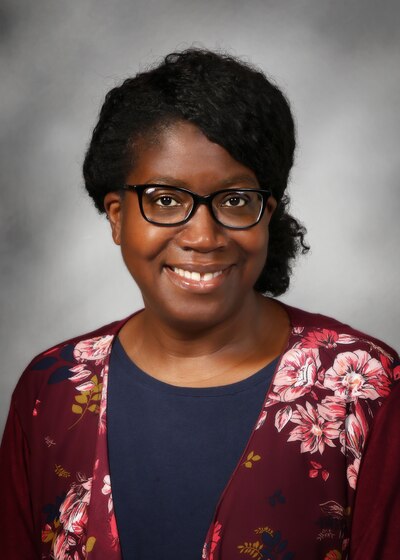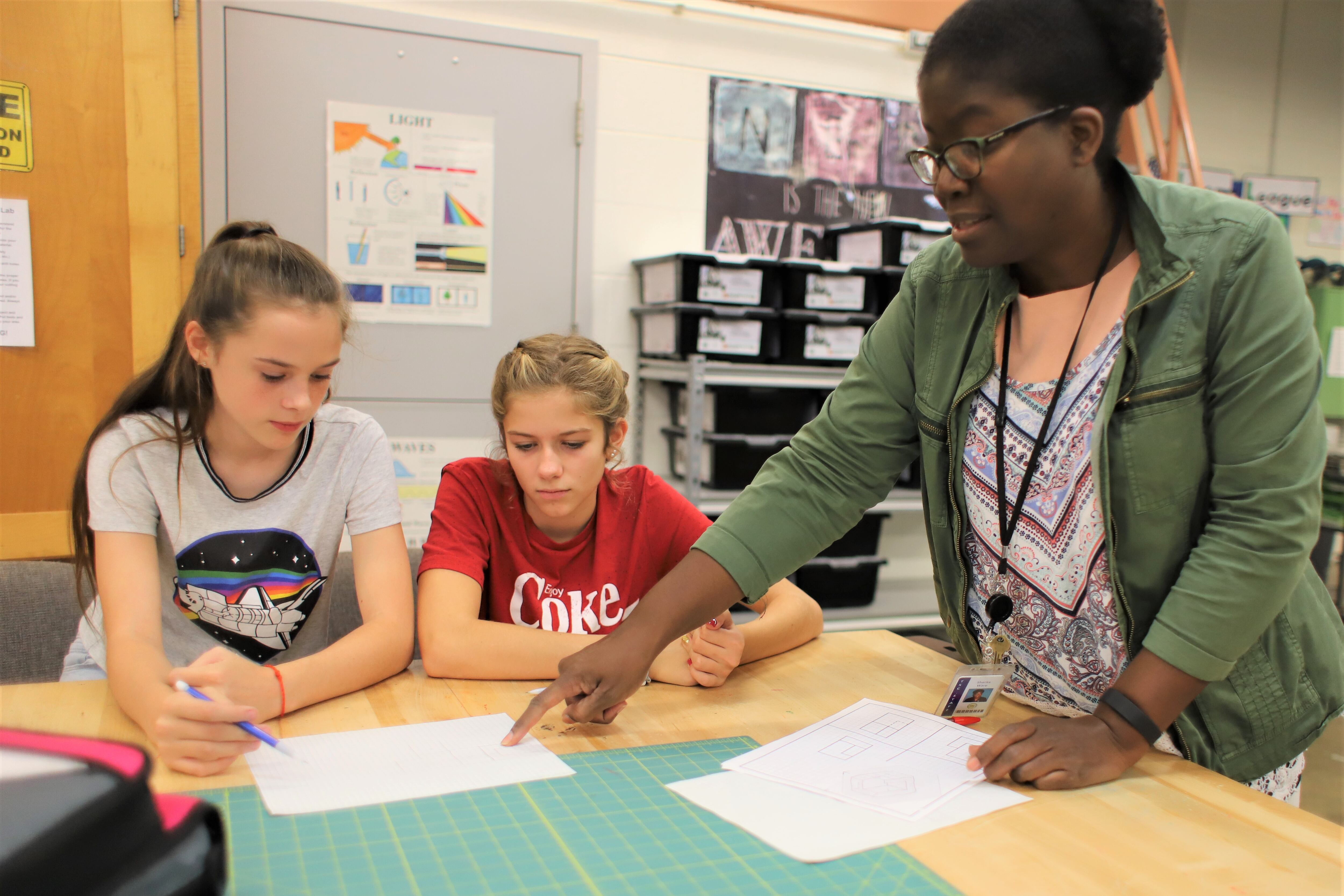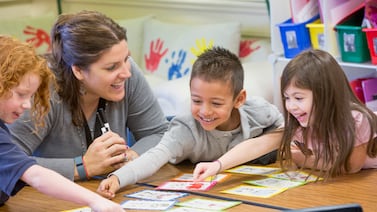Indiana’s 2022 Teacher of the Year has a simple strategy for getting students excited about science, technology, engineering, and math:
“I get excited,” said East Tipp Middle School teacher Sharita Ware. “I enjoy everything about STEM because if you can dream it up, you can design and make it.”
Ware teaches seventh- and eighth-grade engineering and technology education in Lafayette, Indiana. In addition to her regular classes, she hosts after-school activities that challenge students to solve real-life problems through hands-on projects, like developing an app or building a robot.
“When they come to the after-school programs, they learn very quickly that they can do whatever they want without worrying about a grade,” Ware said. “They are more willing to take risks.”
Ware, who has 10 years of teaching experience, spoke to Chalkbeat about fostering imagination, connecting lessons to the world around us, and growing up with teachers who believed in her.
This interview has been edited for length and clarity.

How did you decide to switch careers to become a teacher?
I wasn’t sure what I was going to do after staying home with my children for nine years. I received an email asking for people with degrees or careers in STEM fields to transition to teaching through the Woodrow Wilson Indiana Teaching Fellowship. Purdue’s program was called STEM Goes Rural. I decided to apply, and the rest is history.
Tell us about a favorite lesson to teach. Where did the idea come from?
I really enjoy teaching engineering design sketching. I learned from the same lessons when I was in school, a long time ago. It was relatively easy for me so I tried teaching it to my students the same way I learned. Some got it, many did not. I had to get very creative, bringing in example 3D shapes, color coding the 3D isometric view so the kids could see the three orthographic views (top, front, and right-side). It is kind of like solving a puzzle. I really enjoy watching my students when they finally get it and are able to help and teach their fellow classmates.
How do you get students excited about STEM?
Some of the kids already have that innovative spirit on them, but some need a little convincing. As a teacher, you have to believe in what you are teaching. How can I expect the kids to get excited about something I don’t care about? I also try to help them see the real-world applications for the content we are learning. That way even if they don’t care about the project, they may be able to use what they have learned for something they do care about.
How did you get involved with after-school programs? How does what you see from students in the after-school programs compare to what you see during classroom lessons?
I want to get as many kids involved in being creative and innovative as possible. Since I only teach seventh- and eighth-grade students, I wanted to introduce the sixth graders to all of the wonderful tools and equipment. I also feel like kids lose a lot of their child-like imagination and creativity once they get to middle school. All of the testing and making the grade overwhelms so many kids that they feel like they don’t have time to be creative.
What are you doing to meet your students’ needs following two disrupted school years and the trauma COVID brought with it?
I am having to be more patient with the students and with myself. The shutdown in March 2020 is still having repercussions to this day. Back then we were just trying to survive and did not know what the future held. We lowered our expectations and made our due dates very flexible — too flexible. We have students who just will not turn things in on time. We have some who barely meet the expectations of an assignment, but still expect a high grade just for turning it in.
I have had to strengthen my resolve to push past the lack of desire of many students to perform or want to learn. I still am trying to hold a high standard while helping them climb up the ladder with words of encouragement, more detailed instructions, and video examples. I don’t always get favorable responses, but I know it is the right thing to do.
What’s something happening in the community that affects what goes on inside your class or your school?
The economic conditions. Some families are struggling. Some are not. The gap between haves and have-nots is widening. Many more middle schoolers have jobs than I remember a few years ago. The uncertainties with COVID and racial tensions weigh on the kids. I have to find productive ways to help them process it all. I try to keep my responses void of my opinions and feelings about things.
Tell us about your own experience with school and how it affects your work today.
I really enjoyed school growing up. I was a pretty quiet and shy child. I didn’t always advocate for myself, and it left some holes in my learning. To this day, I don’t have the best relationship with math because I didn’t have the best teachers. I think they did the best they could in most cases but did not go out of their way for every student. I did have some really great teachers that saw the potential of that quiet little girl. They gently pushed me and helped me discover some of my strengths as a student.
What’s the best advice you’ve ever received, and how have you put it into practice?
Stay true to yourself. Be intentional and purposeful. The world seems to want everyone to have the same identity. There is no respect for differences unless your difference agrees with my difference. It is possible to respect other people even when you don’t agree with them. I try to treat everyone with respect and kindness. I also try to make sure the things I ask my students to do have value and purpose. I like for there to be somewhat of a flow between all of the things we learn in class. My hope is when my students look back at the time they spent in my class, they can see value in most of what they learned.
You have a busy job, and this is a stressful time. How do you take care of yourself when you’re not at work?
I really enjoy gardening and working outside with my hands. It is so relaxing to nurture flowers and watch them grow and make our home look so pretty. I also love to build with Lego. Spending time with my family, my husband and children, brings me joy. I like hearing about their days and laughing at their antics. We also go to church together, and that is where my cup gets refilled so I can continue to bless others. When I stay focused on what really matters, I am at peace.








